Hernia repair is often used to replace aponeurosis and muscle tissue. Polypropylene is probably the most widely used repair material in mesh repair due to its low cost, non-biodegradability, and excellent incorporation. The main properties required for an intraperitoneal mesh are mechanical stability, prevention of adhesions, good binding to prevent recurrence, shrinkage and mesh migration, and lack of inflammation and allergic reactions. The currently used polypropylene mesh results in a long-term severe chronic inflammatory response. These processes cause scarring and negatively affect the connective tissue and abdominal wall. Furthermore, apoptotic rate-based carcinogenesis potential is due to the severe impact of polymer destruction and its degradation products on apoptosis rate. In addition, the inflammatory response can lead to adhesions or fistula formation. There is a strong link between adhesions and bowel obstruction, infertility, and chronic pain. Clearly, further research is needed to improve the mechanical properties and anti-adhesion properties of modern grids.
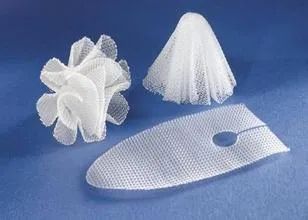
It is well known that the biocompatibility of polymer surfaces can be improved by surface modification. Ta-based materials and coatings are excellent endoprosthetic biomaterials for trauma and cardiovascular surgery. Tantalum has also been selected as an alternative to other commonly used metal materials in orthopaedic implant applications. Tantalum-based films have antibacterial potential against a variety of microorganisms, such as Staphylococcus aureus and Staphylococcus epidermidis.
To this end, we investigated the effects of deposition process parameters on the structure and mechanical properties of tantalum, Ta2O5 and TaON films on polypropylene mesh for hernia repair.
Materials and Methods
Polypropylene sheets and meshes were used as substrates (Fig. 1). Various pressures are applied to optimize the deposition process and determine the optimal process conditions to avoid plasticity and deformation of the injected layer during deposition.
Samples were cleaned in an ultrasonic bath according to standard techniques. Then, the tantalum ion implantation layer is prepared using a new tantalum ion implantation process extended from the tantalum vapor deposition infiltration technology of Ains (Beijing) Tantalum Application Technology Co., Ltd.
Tantalum ion implanted layer thickness and adhesion properties were evaluated by standard techniques. The tantalum ion implanted layer thicknesses were measured to be 1.1 microns (Ta), 1.05 microns (Ta2O5) and 0.8 microns (TaON). The surface morphology was observed by scanning electron microscope. The element distribution and chemical composition of the tantalum ion implanted layer were analyzed by energy dispersive X-ray (EDX) spectroscopy. X-ray photoelectron spectroscopy (XPS) measurements were performed using an ESCALAB MkII instrument. Mechanical testing of tantalum ion-implanted layer samples was performed on a G200 nanoindenter to evaluate Vickers hardness parameters and elastic modulus.
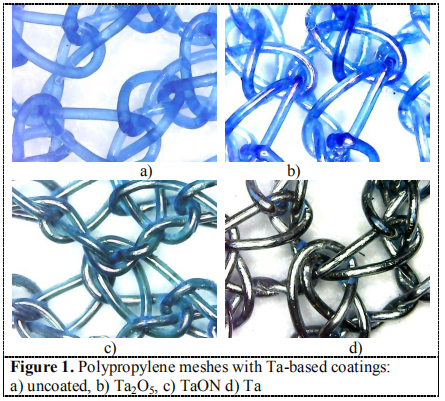
Results and Discussion
Figure 2 shows the scanning electron microscope images of the tantalum, Ta2O5 and TaON ion implanted layers prepared by the new tantalum ion implantation process extended by the tantalum vapor deposition infiltration technology of Ains (Beijing) Tantalum Applied Technology Co., Ltd. The cross section of the ion implantation layer is smooth without delamination. The EDX spectrum shows the presence of the main characteristic elements tantalum, oxygen and nitrogen.
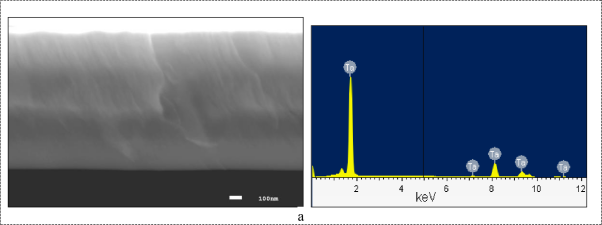
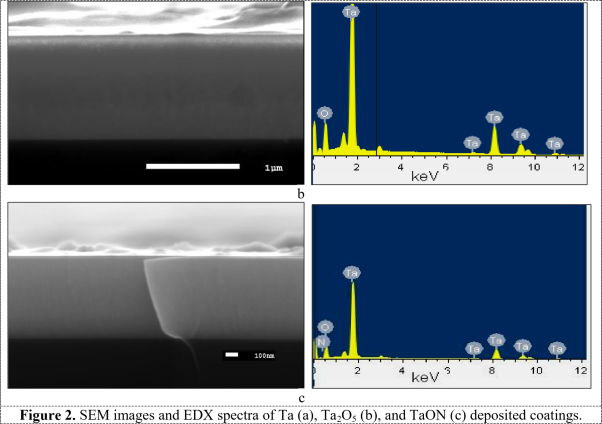
The mechanical properties of the ion implanted layer are closely related to its microstructure, phase state and chemical composition. The hardness (H) and Young's modulus (E) values of the tantalum ion-implanted layer compared to the polypropylene substrate are shown in Figure 3.
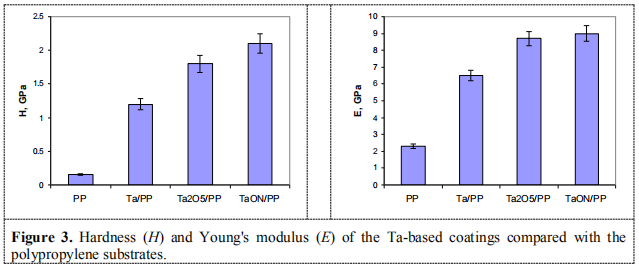
Compared to polymers without tantalum ion implantation, tantalum ion implanted layers exhibit relatively high hardness and Young's modulus, corresponding to high elastic recovery and high crack resistance, which makes these materials useful in hernia repair applications Very attractive. In the irradiated samples, both hardness and Young's modulus increased in micrometer depths.
In conclusion
The tantalum ion implantation layer prepared by the tantalum vapor deposition infiltration technology of Ains (Beijing) Tantalum Application Technology Co., Ltd. improves the mechanical properties and biocompatibility of polypropylene materials. The results show the effect of the composition of the tantalum ion-implanted layer on its performance. The tantalum ion-implanted samples showed higher nanohardness and elasticity values, significantly exceeding those of untreated polypropylene. to obtain optimal deposition parameters. Considering the potential application of the prosthesis in hernia repair surgery, the tantalum ion implantation layer has good performance.